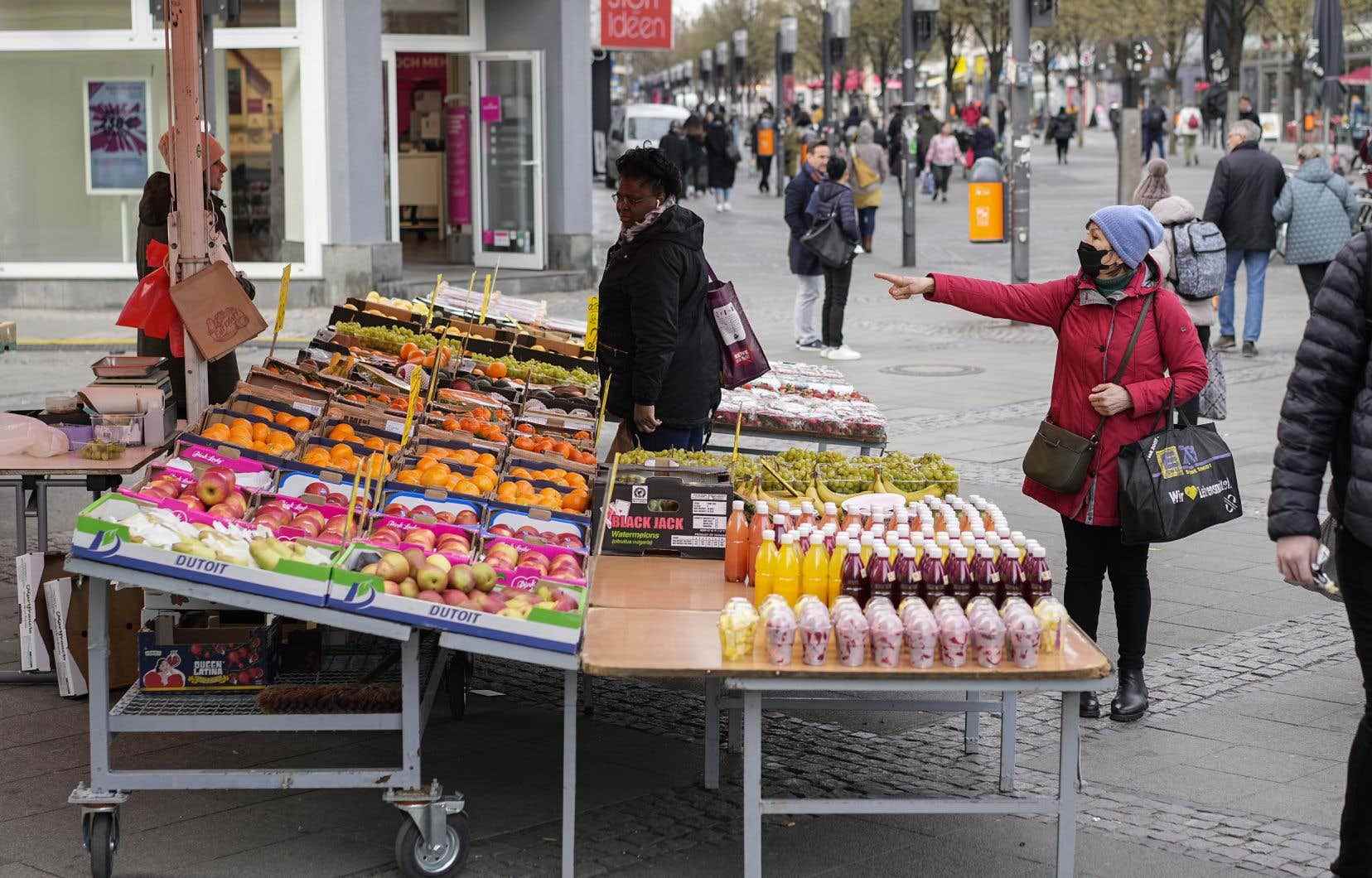Economic growth in the euro zone lost significant momentum in the third quarter, but a little less than expected. A very temporary reprieve, as the prospect of a recession draws closer, against a backdrop of record inflation in October.
The gross domestic product (GDP) of the 19 countries sharing this single currency increased by 0.2% over the July-September period compared to the previous quarter, after having already held up better than expected in the second quarter (+ 0.8%) , according to figures released Monday by the European statistics office Eurostat.
This could only be a reprieve, however: the surge in prices, in particular energy, continues to accelerate against a backdrop of war in Ukraine and the hike in rates by the European Central Bank (ECB) is clouding the economic situation.
Other indicators are already showing a contraction in economic activity. “The reversal is at work. It is no longer a question of whether we will enter a recession, but of how severe this recession will be. […] A recession this winter in the eurozone is imminent,” reacted Paolo Grignani, expert at Oxford Economics.
“The probability of a recession is much more on the horizon,” ECB President Christine Lagarde had already warned on Thursday.
For Mr. Grignani, the performance of the euro zone was driven by “the solidity of household consumption”, in particular in tourism, reinvigorated during the summer holidays after two years of pandemic, while business investments “held up better than expected”.
Surprise growth in Italy
In France and Spain, GDP grew by 0.2%, after rising by 0.5% and 1.5% respectively in the previous quarter. But the biggest surprises came from Germany and Italy, two countries yet extremely affected by the energy crisis and inflation.
In Germany, where a decline in GDP was expected, activity in Europe’s largest economy actually increased by 0.3%, according to an indicator released on Friday. While Berlin has released tens of billions of euros to relieve households in the face of rising prices, “private consumption” has made it possible to limit the damage, according to the national statistics institute Destatis.
On Monday, Italy unveiled growth of 0.5%, while the former government, led by Mario Draghi, on the contrary forecast a “slight decline” in GDP. Here again, the good performance of the services sector played a role (up by at least 1% according to Oxord Economics).
However, this resilience could be short-lived: inflation in the euro zone accelerated further in October, to a new record (+10.7% over one year), driven by the persistent surge in energy prices (+ 41.9%). For food, tobacco and alcohol, prices rose by 13.1%.
Inflation in the euro zone had reached 9.9% in September (revised figure), already the highest since Eurostat began publishing the indicator in January 1997.
“Complicated” monetary policy
In October, France, which adopted consumer protection measures, including lower fuel prices, maintained the lowest inflation in Europe, at 7.1%, according to harmonized Eurostat data. .
For its part, Germany is at 11.6%. The Baltic countries, particularly exposed to the consequences of the war in Ukraine, suffer from the highest inflation: 22.4% in Estonia, 22% in Lithuania and 21.8% in Latvia.
To fight against price fever, the ECB raised its key rates by 0.75 percentage points on Thursday for the second time in a row, and the “journey” is not over, warned Ms. Lagarde, opening the further tightening of monetary policy to raise borrowing costs and dampen demand, thereby cooling prices.
A risky choice in a context of economic cooling, and criticized by several leaders, including French President Emmanuel Macron. Raising rates is “the most appropriate decision to restore price stability, which is of paramount importance […] for prosperity and the recovery of the economy,” replied Ms. Lagarde.
However, the divergence in inflation rates between countries in the euro zone (from 7% in France to some 20% in the Baltic countries) “complicates even more the development of a common monetary policy”, observes Paolo Grignani, from Oxford Economics.
